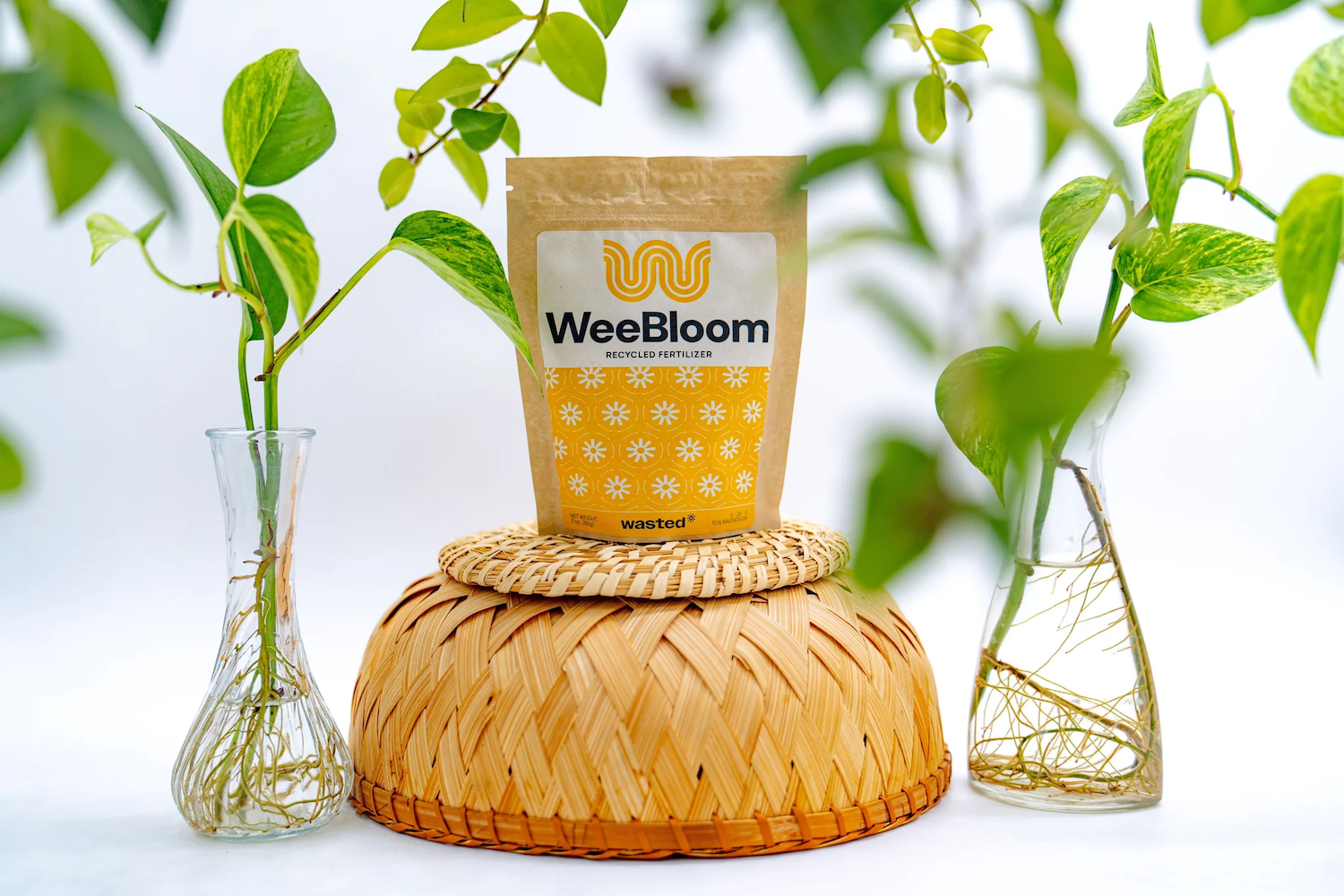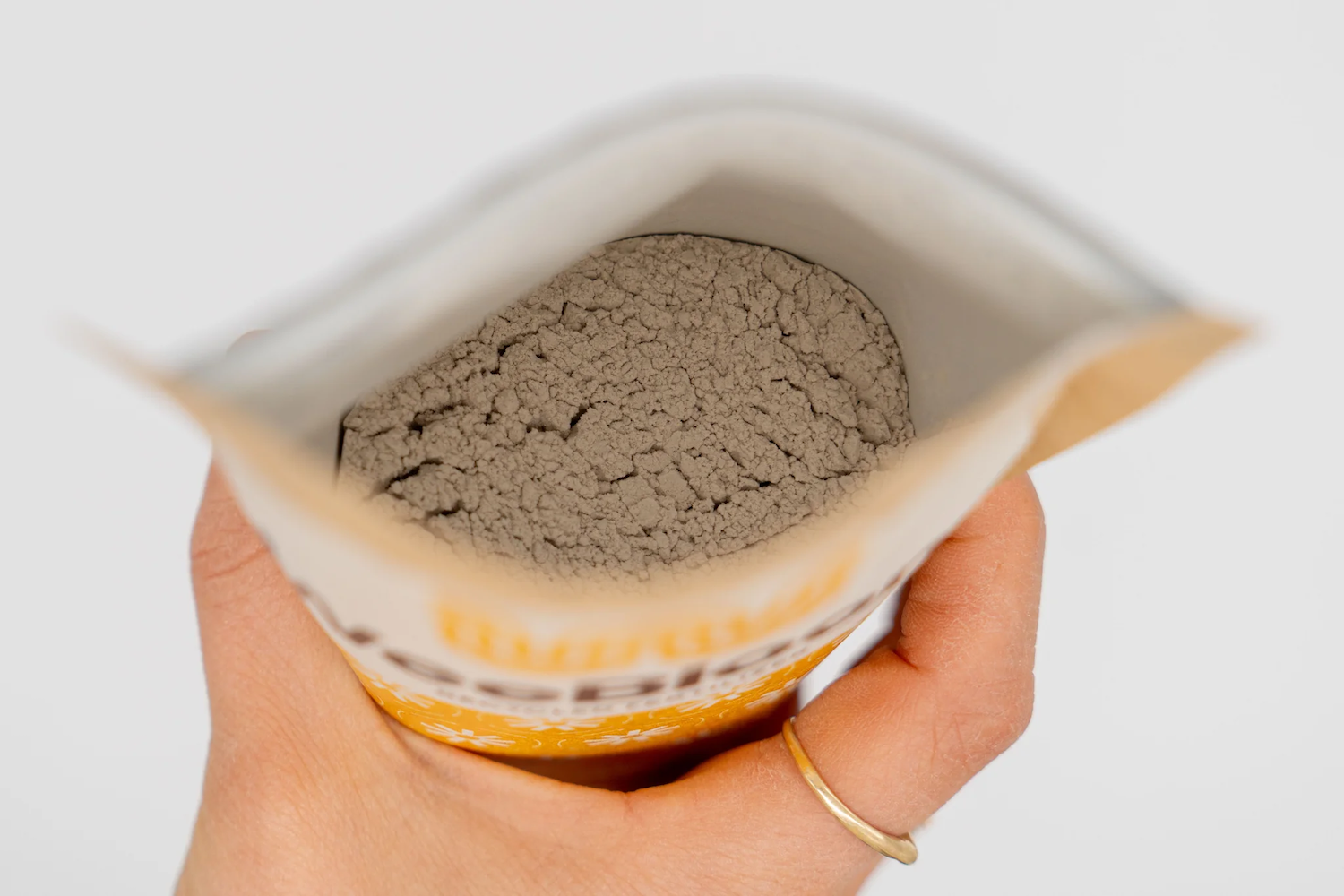
WeeBloom, the fertilizer powder made from urine, matches the ratio of nitrogen, phosphorus, and potassium of other products on the market. (Image courtesy of Wasted.)
“Number one,” “whiz,” “piddle,” “tinkle,” and, of course, “pee,” are common euphemisms for urine. For the Vermont-based startup Wasted, urine could also be called “liquid gold.”
“Urine contains nitrogen, phosphorus and potassium — the key components of fertilizer,” Taylor Zehren, co-founder and CEO of Wasted, told TriplePundit. “With access to this resource, it became clear to us that we could help reintegrate human waste into the natural nutrient cycle.”
The portable toilets, restroom trailers, off-grid toilets and waste management company recently introduced WeeBloom, a slow-release, natural fertilizer powder upcycled from urine.
“The founding team at Wasted comes from a background in backcountry human waste management,” Zehren said. “For many years, we ran a nonprofit called Do Good Sh*t, which installed waste management systems across the globe — from Chile and Argentina to Nepal. Our approach focused on waste separation and urine diversion.”
The startup’s founders saw an opportunity to apply that same approach in more populated areas and harness the nutrients in urine to create valuable products, Zehren said.
Producing WeeBloom begins with the startup’s specialized toilet systems, which separate urine from other waste. The collected urine is transported by service trucks to a treatment facility, where it undergoes processing to yield two agricultural products: WeeBloom and a nitrogen-rich sidestream. The entire system relies on urine diversion — keeping this nutrient-rich feedstock separate from other waste from the start, then moving it directly into treatment, Zehren said.

The result is a phosphorus-rich specialty fertilizer that matches the ratio of nitrogen, phosphorus, and potassium of several existing products on the market, she said. And it was found to be just as effective as conventional alternatives.
Most of the world's phosphorus is used for fertilizers. While there’s a range of opinions as to whether and when the planet's phosphorus reserves might be exhausted, most of it is mined through highly-extractive processes in geopolitically-sensitive regions, Zehren said.
“By using WeeBloom, or any fertilizer derived from recycled human waste, we can localize phosphorus production,” she said. “This creates a closed-loop system where phosphorus is sourced from the local population and used to grow the food or materials that same population needs.”
Concerns have been raised about converting human waste into fertilizers because of the presence of PFAS in sewage-based fertilizers and pharmaceuticals in wastewater. Also known as forever chemicals, PFAS are widely used in everyday items and pose human health and environmental risks.
As a registered fertilizer and licensed treatment facility, Wasted must comply with strict regulatory standards for its operations and products. WeeBloom underwent EPA-standard testing for 40 PFAS compounds and showed non-detectable levels for all, Zehren said.
“Many of the contaminants entering municipal wastewater systems come primarily from industrial sources and common household products like personal care items and cleaning supplies,” Zehren said. “In contrast, with urine diversion and our unique system, we start with a much cleaner feedstock. Because the urine is kept separate, it doesn’t mix with those industrial and household waste streams that carry the bulk of contaminants like PFAS.”
The best way to address the presence of pharmaceuticals in wastewater is to consider their end fate and impact when used in agriculture, Zehren said.
“WeeBloom is a slow-release fertilizer, specifically slow-release phosphorus, which means it's not highly water-soluble and is less prone to runoff,” she said. “When we talk about pharmaceutical contaminants in the soil, the key questions are: Where do these compounds end up, and are they bioaccumulating in plants? Research across the industry shows that these compounds do not significantly accumulate in plant tissue.”

The Wasted team acknowledges that some consumers might be squeamish about using a product derived from urine.
“When it comes to WeeBloom, it’s also essential to emphasize that it’s no longer ‘pee.’ By the time it reaches the end user, it has gone through a full treatment process,” Zehren said. “The final product is a refined, odorless, whitish powder. It’s not a smelly, yellow liquid, it’s been transformed into something clean, stable and ready for agricultural use.”
With WeeBloom now registered as a fertilizer, it’s challenging taboos and shifting public perception, Zehren said.
“I often say I want my kids to grow up in a world where they look back and say, ‘I can’t believe we used to flush valuable nutrients down the toilet with clean water,’” she said. “We’re dealing with finite resources — like water and phosphorus — yet we’ve historically used them in incredibly wasteful ways. The circular nutrient cycle is right in front of us.”

Gary E. Frank is a writer with more than 30 years of experience encompassing journalism, marketing, media relations, speech writing, university communications and corporate communications.














